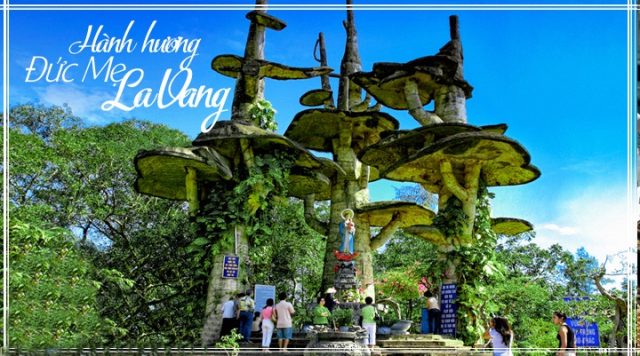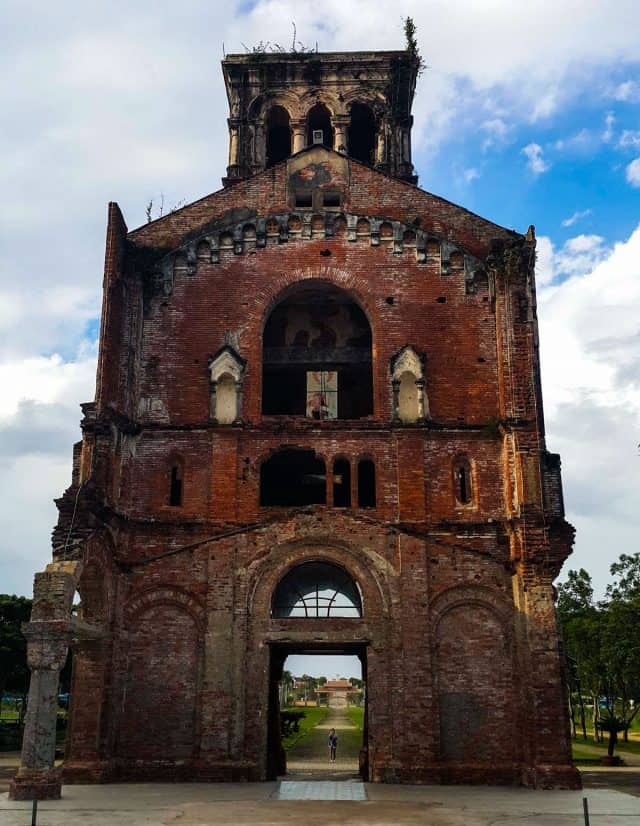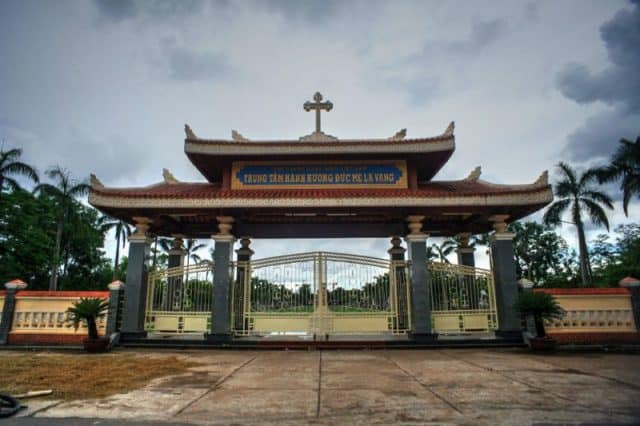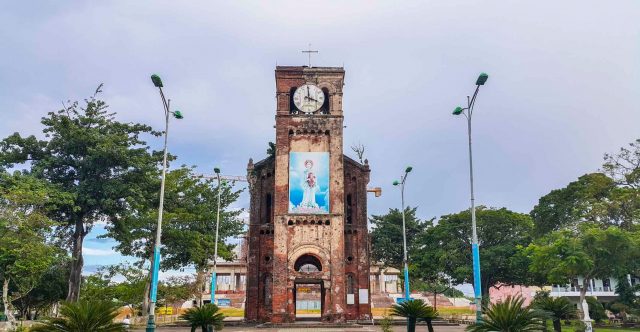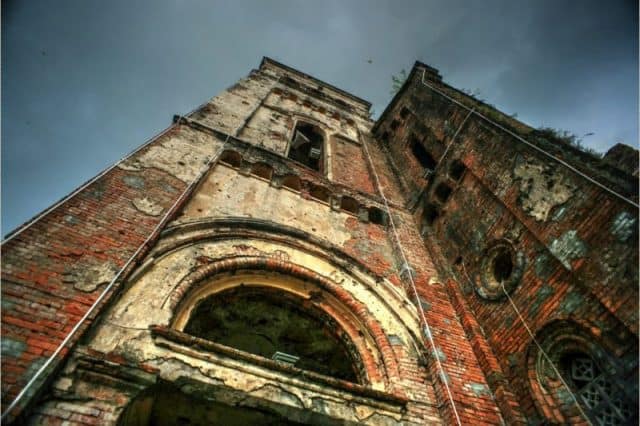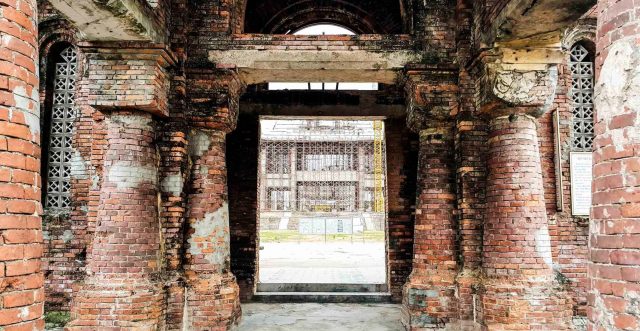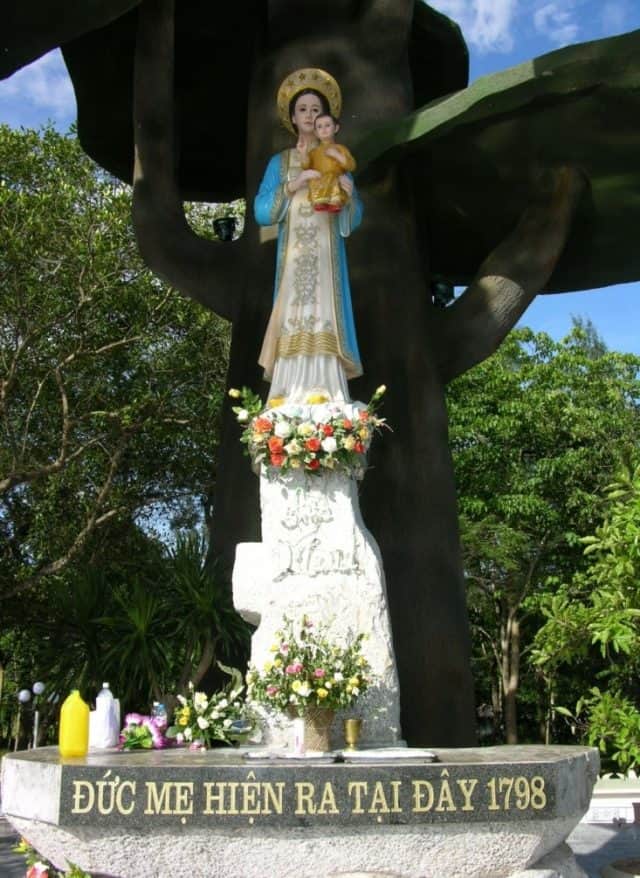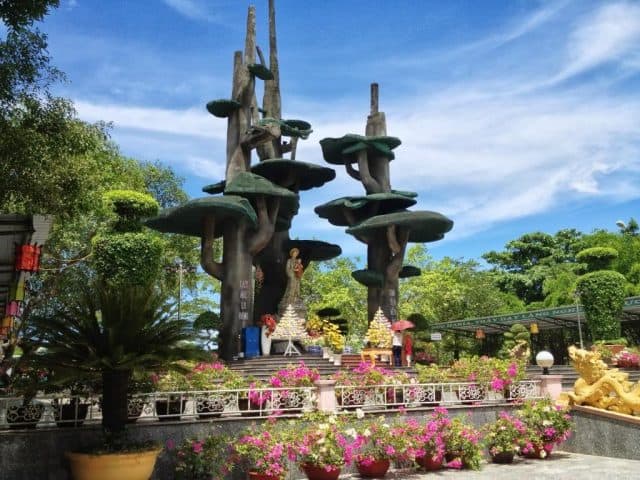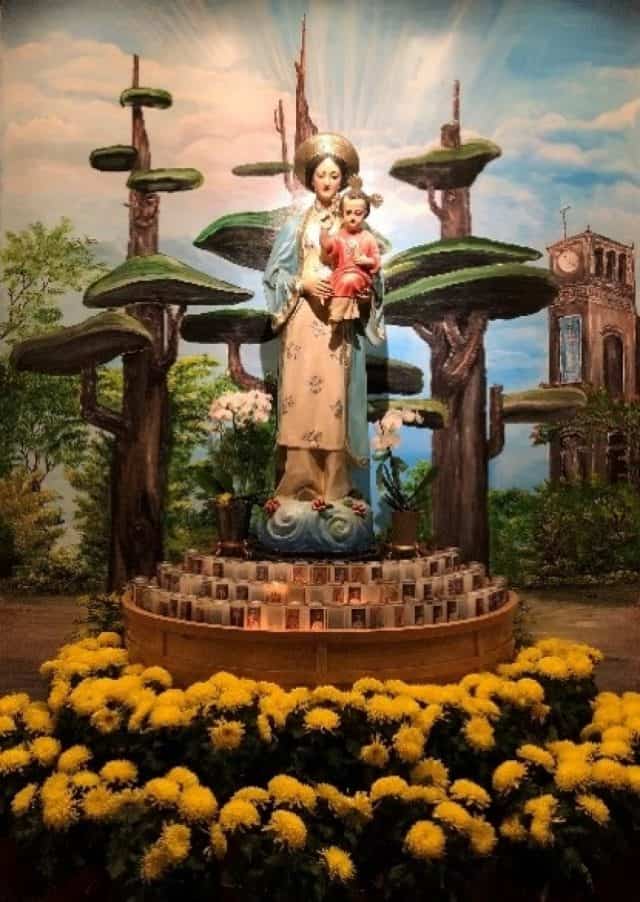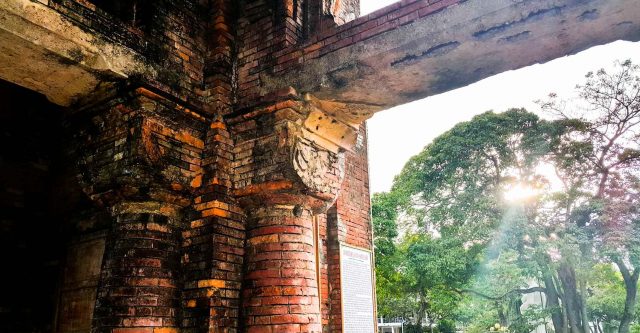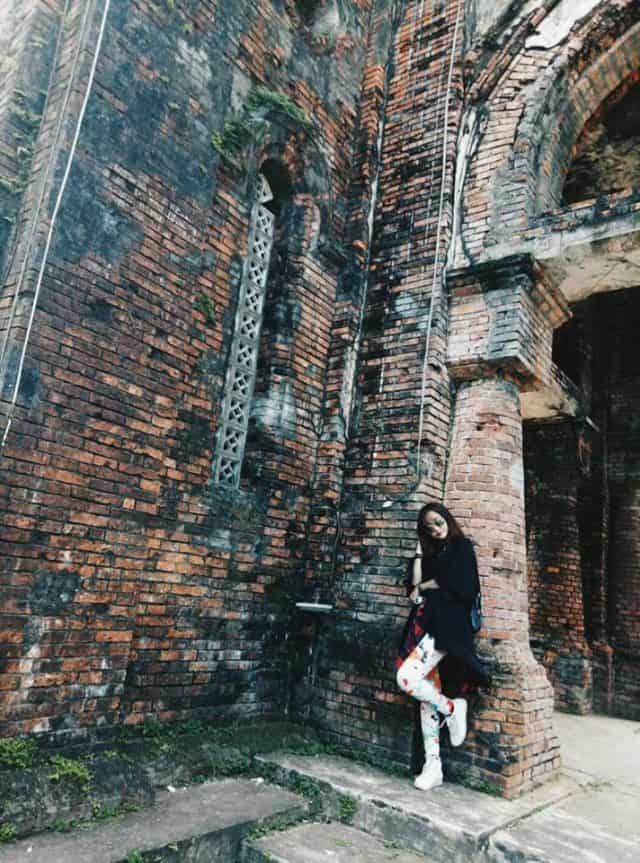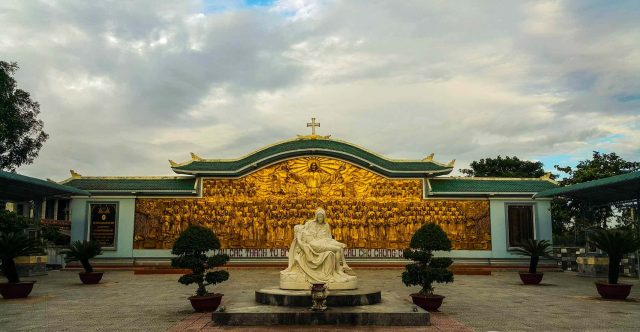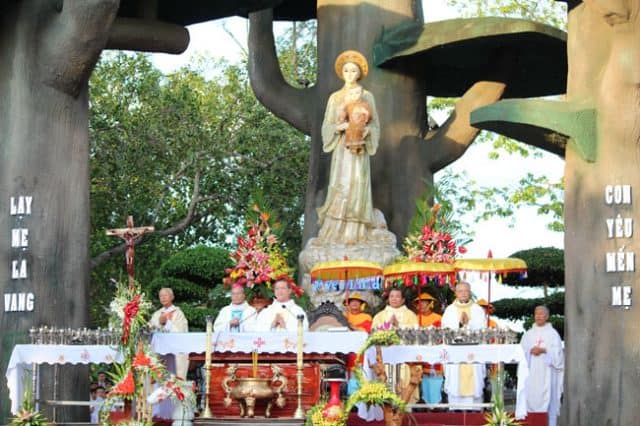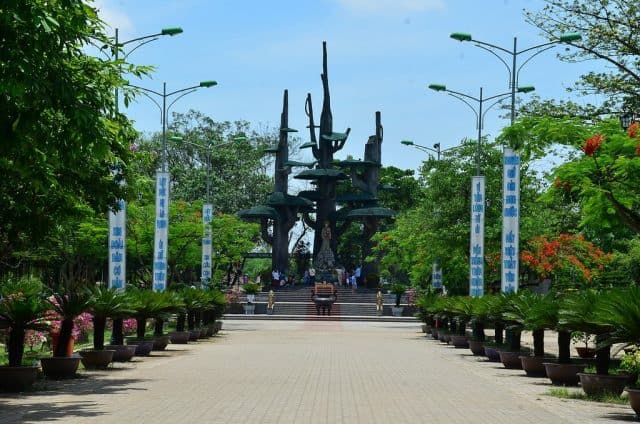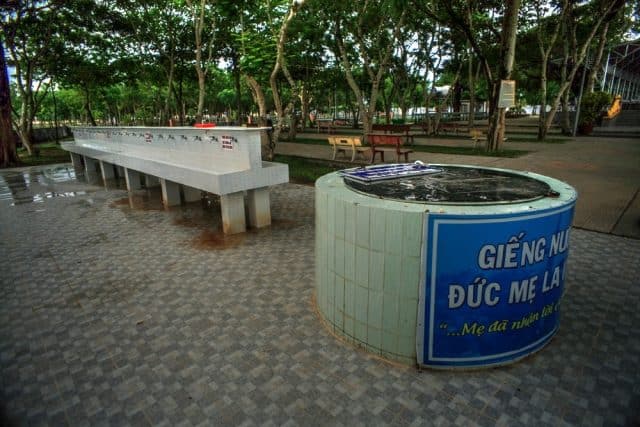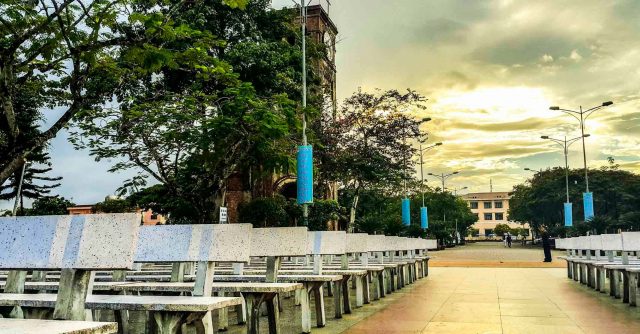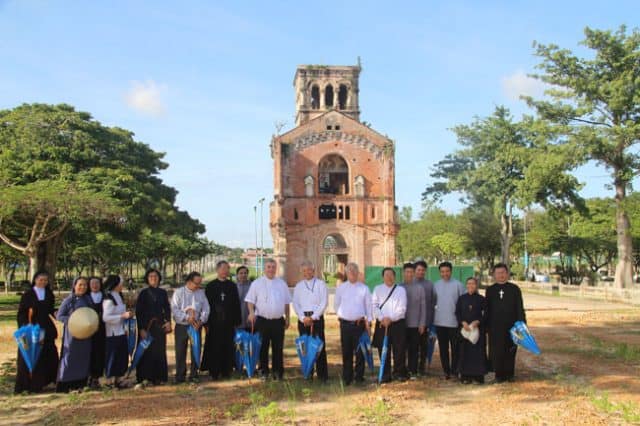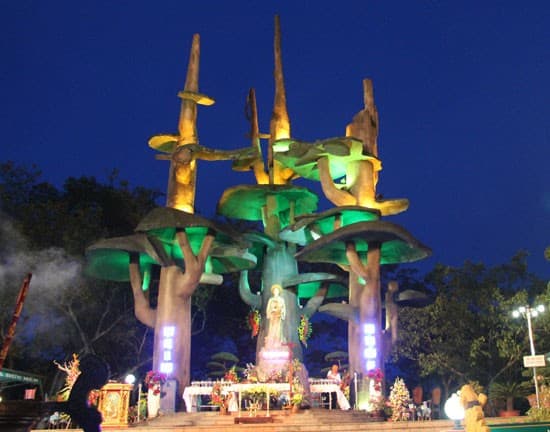La Vang Sanctuary has long become a famous tourist destination in Quang Tri. La Vang is one of the important pilgrimage sites not only for Catholics but also for non-Catholics and international tourists. Please refer to the following article of Vntrip.vn to learn about the Holy Land of La Vang and listen to the story of the apparition of Our Lady.
Where is La Vang Holy Land?
La Vang Holy Land is located in an ancient area called Dinh Cat (in the reign of Lord Nguyen Hoang in the 16th century, this area was called Dinh Cat, or Palace built on a sandy land, sometimes called Cat Dinh). Today belongs to Hai Phu commune, Hai Lang district, Quang Tri province. This place is about 6km south of Quang Tri Citadel and 60km north of Hue city. La Vang Sanctuary is the national Marian center of the Vietnamese Catholic Church.
The way to La Vang Holy Land
From Hanoi, City. Ho Chi Minh or some other place that wants to go to Mother La Vang – Pilgrimage Center of the Catholic Church of Vietnam, very simple. There are many different ways and means. You can go by train, North – South car, motorbike…
If you take the North – South bus (National Highway 1A), then to Quang Tri Town – Quang Tri Province, you stop at White Bridge, then take a motorbike taxi or taxi to La Vang Holy Land (4km away).
If you take the train, you can get off at Dong Ha Station then take a motorbike taxi or taxi to La Vang Holy Land (16km away) or at Hue station 57km from La Vang. Stop at Hue station, you can rent a car to visit Hue Ancient Capital, then make a pilgrimage to Mother La Vang.
If you ride a motorbike, on the territory of Hai Phu commune, on the left hand side, there are two entrances about 5km apart, one place has a sign saying “La Vang 4km”, and the other has a sign saying “La Vang Sanctuary 2km”. ” is a fairly wide old road that brings pilgrims to the holy place.
The origin of the name “La Vang”
Originating from La Vang, there are 2 legends. The first theory is that “Screaming” describes the cry for help when seeing wild animals. Those who go to the forest, if they stay overnight, they often share the vigil, if they see movement, they will “scream” for everyone to come to their rescue. Or the voice of the parishioners shouting loudly when there is something to say loudly because this area has many trees, speaking in low voices and difficult to see each other.
Another theory is that the word “leaves”, written without accents, is La Vang. When the parishioners ran up to this land together when there was an epidemic, at that time Our Lady appeared and showed them to look for a type of leaf called sage leaf – drinking it will cure the disease. This is a kind of cooking leaf that is very good for health, so many people today pick it up or buy it to drink.
The Story of the Epiphany of Our Lady
It can be said that La Vang Holy Land is a land full of love of Our Lady when she appeared to God’s people in 1798 under King Canh Thinh (son of King Quang Trung).
According to the document of the Archbishopric of Hue – 1998, during the reign of King Canh Thinh (enthroned in 1792), with a decree banning religion on August 17, 1798, some of the faithful near Dinh Cat hill (now the town of Ho Chi Minh City). Quang Tri commune) had to find a place to hide. They took refuge in the mountains of La Vang. In the sacred forest with poisonous water, difficult circumstances, lack of food, disease, fear of military officers, fear of wild animals, believers can only trust in God and Our Lady. They often gather together under the ancient banyan tree, together to pray, comfort and help each other.
One day when everyone was praying together, they suddenly saw a beautiful woman, wearing a long robe, holding a newborn baby in her arms, with two angels holding lamps on either side. They immediately recognized it as the Virgin Mary. Our Lady showed kindness, tenderness, and comfort to the parishioners so that they could suffer willingly. Mother taught them to pick a kind of leaves available around there, boil water to drink to cure diseases. Our Lady made another promise: “I have heard your prayers. From now on, whoever comes to me in this place and prays, I will answer and give them grace.”
Our Lady appeared in La Vang on the grass near the old banyan tree where parishioners were praying. The parishioners present saw this miracle. After that, she appeared many times to support and comfort her children during their one hundred years of persecution and martyrdom. It is also thanks to her promise of grace that since the day Our Lady appeared in La Vang until now, so many people have come here to ask for and honor her.
What does La Vang Holy Land have?
La Vang Holy Land, also known as “The Little Basilica of La Vang”, has had to go through many events in history and time. Until today, La Vang Holy Land seems to radiate its ancient beauty under a corner of Hai Lang – Quang Tri. The architecture of the church here follows the traditional architecture of Catholic church buildings.
However, the mossy color of the church has made a distinct feature, making it easy for anyone who sees it for the first time to immediately think of historical stages, not only each holy place but also a period of time. eventful, now passed into the past.
In the center of the Holy Land, today remains the remains of the bell tower of the Basilica of Our Lady of La Vang. This work was built from 1924 – 1929, restored in 1959. In the summer of 1972, the Basilica was destroyed due to war.
At the location believed to be the place where Our Lady appeared near the old banyan tree, a monumental monument was built with the image of three banyan trees and Our Lady of La Vang in the middle. And the Statue of Our Lady of La Vang is also located in many places in the Holy Land. Our Lady is often represented by the image of a woman wearing a Vietnamese ao dai holding a baby who is also wearing traditional Vietnamese clothing.
In front of the bell tower of the Basilica of Our Lady of La Vang is a large square. On either side of the square is the Way of the Cross – a series of 14 sculptures, depicting the progression of Jesus’ passion, from his conviction to his crucifixion and finally his burial in St. crypt.
In addition, on the site of the Holy Land, there is a well of Our Lady of La Vang, where each believer when coming here takes a sip of water to pay respect to Our Lady. Many believers believe that well water has the ability to cure diseases in the body.
La Vang pilgrimage festival
The Congress of Our Lady of La Vang takes place every 3 years at La Vang Holy Land. The 31st Congress is the latest one on August 13, 14, 15, 2017. According to the historical length, the 1st Congress of Our Lady of La Vang was held in 1901. Regarding the date of organization, There are different but also in August.
Since the 23rd (1993), there has been a La Vang Congress every 3 years on August 13, 14, 15 with many important ceremonies and with the participation of many Bishops, priests, monks and hundreds of thousands of parishioners from home and abroad.
During the three days of the Congress, there are often many forms of activities of some associations, there are discussions on topics, there is a very solemn procession of Our Lady with many members of God’s people. It can be said that the procession of Our Lady is a very special rite to honor Our Lady of La Vang during the Congress.
Next, there was a very elaborately invested night of prayer and a night of Eucharistic adoration with Mother. The most solemn Mass in the 3 days of the Congress is the solemn celebration of the Assumption of the Blessed Virgin Mary into Heaven on the morning of August 15. This is also the closing Mass of the Congress.
Source: Collected internet.
